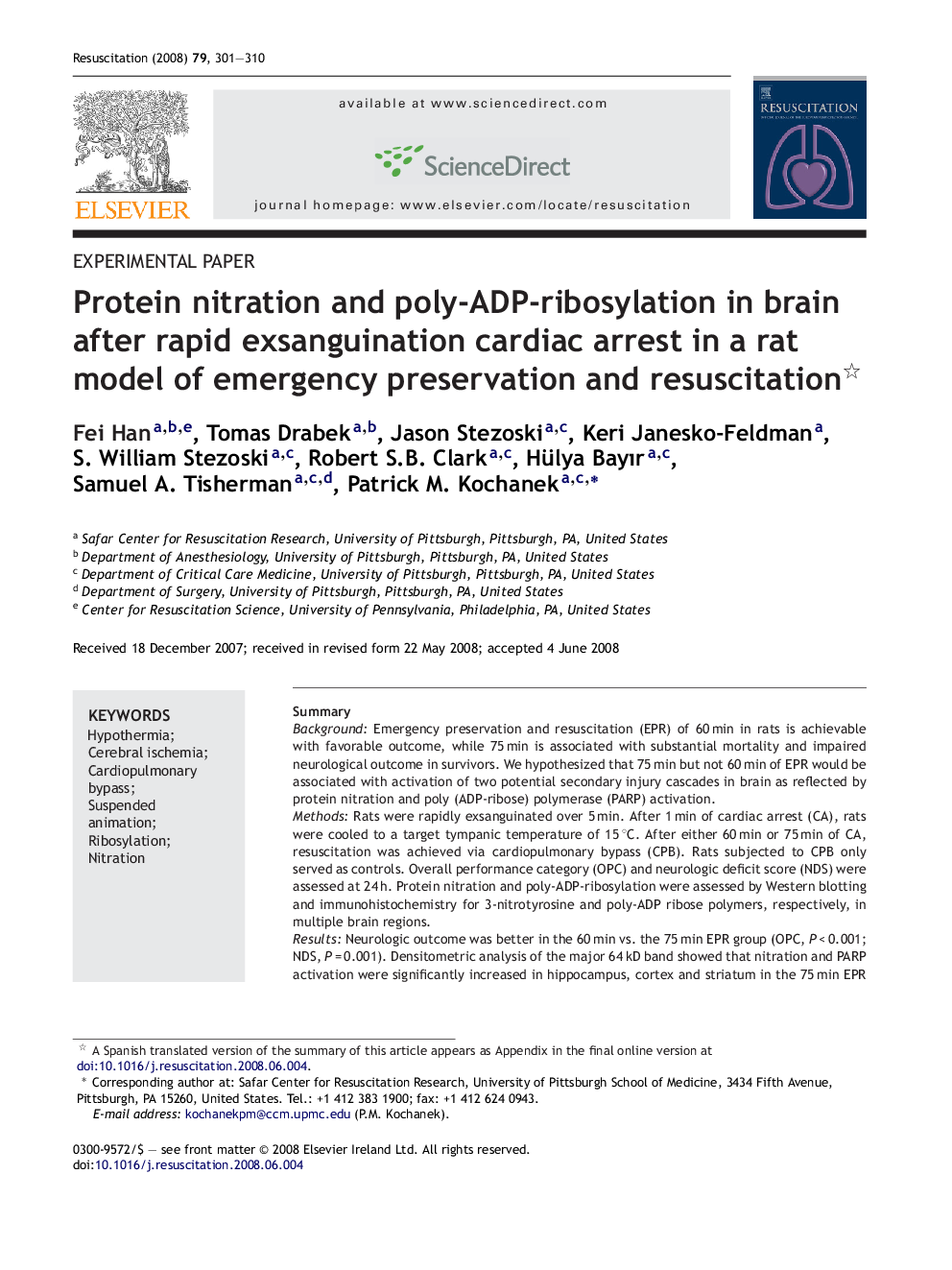| Article ID | Journal | Published Year | Pages | File Type |
|---|---|---|---|---|
| 3011311 | Resuscitation | 2008 | 10 Pages |
SummaryBackgroundEmergency preservation and resuscitation (EPR) of 60 min in rats is achievable with favorable outcome, while 75 min is associated with substantial mortality and impaired neurological outcome in survivors. We hypothesized that 75 min but not 60 min of EPR would be associated with activation of two potential secondary injury cascades in brain as reflected by protein nitration and poly (ADP-ribose) polymerase (PARP) activation.MethodsRats were rapidly exsanguinated over 5 min. After 1 min of cardiac arrest (CA), rats were cooled to a target tympanic temperature of 15 °C. After either 60 min or 75 min of CA, resuscitation was achieved via cardiopulmonary bypass (CPB). Rats subjected to CPB only served as controls. Overall performance category (OPC) and neurologic deficit score (NDS) were assessed at 24 h. Protein nitration and poly-ADP-ribosylation were assessed by Western blotting and immunohistochemistry for 3-nitrotyrosine and poly-ADP ribose polymers, respectively, in multiple brain regions.ResultsNeurologic outcome was better in the 60 min vs. the 75 min EPR group (OPC, P < 0.001; NDS, P = 0.001). Densitometric analysis of the major 64 kD band showed that nitration and PARP activation were significantly increased in hippocampus, cortex and striatum in the 75 min EPR group vs. other groups. However, there were no differences in cerebellum. Analysis of the full protein spectrum showed significantly increased PARP activation only in hippocampus in the 75 min EPR group vs. other groups.ConclusionsExtending the duration of EPR beyond the limit that can yield favorable recovery in rats was associated with increased nitration and ribosylation of selected proteins in selectively vulnerable brain regions. The impact of these mechanisms on the outcome remains to be determined.
